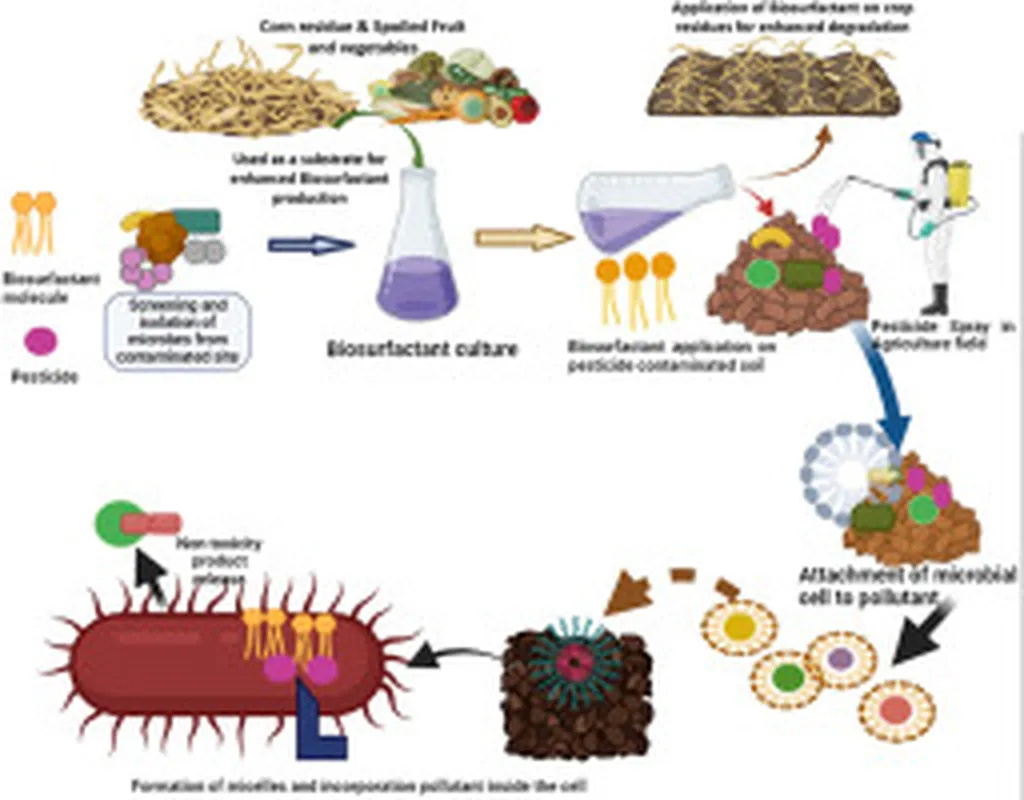In a world increasingly conscious of sustainability, a groundbreaking review published in the journal *Discover Applied Sciences* (translated to English as *Discover Practical Sciences*) is shedding light on a promising alternative to synthetic surfactants: biosurfactants. These amphiphilic compounds, derived from renewable resources and primarily produced by microorganisms, are gaining traction for their low toxicity, high biodegradability, and environmental stability. The comprehensive review, led by Rajni Garg from the Department of Applied Science and Humanities at Galgotias College of Engineering & Technology, delves into the synthesis and sustainable applications of biosurfactants, offering insights that could reshape industries, particularly the energy sector.
Biosurfactants are not just environmentally friendly; they are also highly effective. They reduce interfacial tension, enhance solubility, and support pollutant degradation. “Their functional efficacy in harsh conditions and biodegradability make them attractive for commercial deployment,” says Garg. This is particularly relevant for the energy sector, where biosurfactants can play a pivotal role in enhanced oil recovery and bioremediation.
The review categorizes biosurfactants by molecular weight and functional groups, evaluating synthesis approaches using both hazardous and organic waste substrates. This focus on waste valorization is a game-changer, as it addresses two critical issues simultaneously: waste management and the production of valuable, sustainable compounds.
In the energy sector, biosurfactants are already making waves. They are effective in oil spill clean-up, heavy metal detoxification, and the inhibition of microbial biofilms. Their ability to enhance oil recovery is particularly noteworthy. “Biosurfactants can improve the mobility of oil in reservoirs, making it easier to extract,” explains Garg. This could lead to more efficient oil recovery processes, reducing the environmental impact and improving the bottom line for energy companies.
Beyond the energy sector, biosurfactants are finding applications in food systems, pharmaceuticals, cosmetics, and agriculture. They are used to improve food texture, enhance drug delivery, and develop skincare formulations. Their versatility and sustainability make them an attractive option for a wide range of industries.
However, the path to widespread commercial deployment is not without challenges. The review discusses production challenges, cost barriers, and regulatory hurdles. To fully realize the industrial potential of biosurfactants, innovations in metabolic engineering, process optimization, and techno-economic modeling are needed.
Despite these challenges, the future of biosurfactants looks promising. As consumer demand for sustainable products continues to grow and regulatory frameworks evolve, the momentum behind biosurfactant research is expected to increase. This review serves as a catalyst, sparking further innovation and investment in this exciting field.
In the words of Garg, “The need for innovations in metabolic engineering, process optimization, and techno-economic modeling is crucial to overcome the current barriers and fully realize the industrial potential of biosurfactants.” With continued research and development, biosurfactants could become a cornerstone of sustainable industrial practices, shaping the future of the energy sector and beyond.
As the world grapples with the challenges of sustainability, biosurfactants offer a beacon of hope. Their potential to revolutionize industries, coupled with their environmental benefits, makes them a compelling subject of study. This review, published in *Discover Applied Sciences*, is a significant step forward, paving the way for a more sustainable future.

